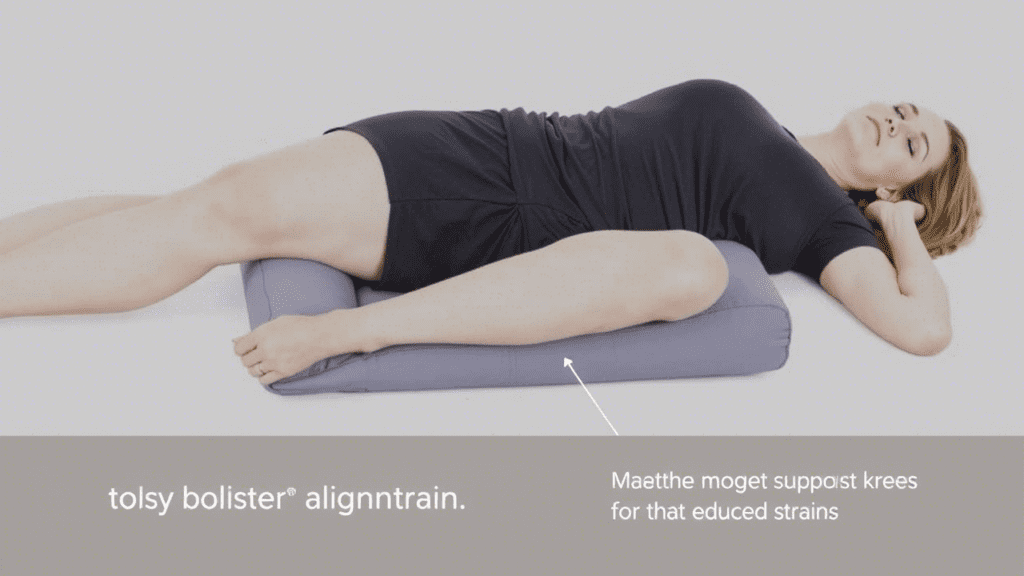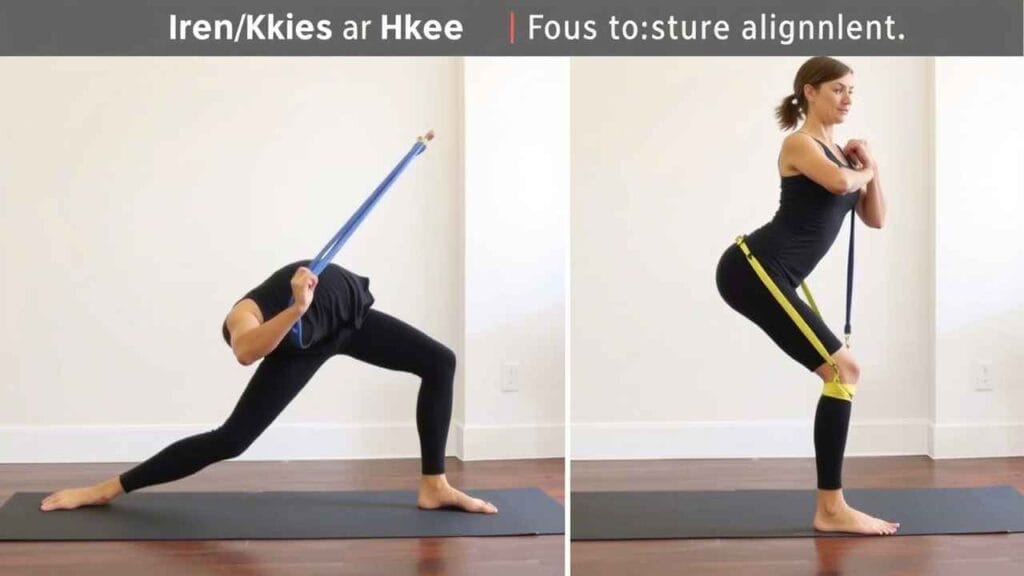Table of Contents
Yin Yoga is all about slowing down, finding stillness, and giving your body time to stretch deeply. But if your knees are giving you grief, it can be hard to enjoy the practice. That’s where 7 Yin Yoga Props come in handy. They’re like little helpers that make poses more comfortable, especially for sensitive knees. Let’s dive into some of the best props to keep your knees happy during Yin Yoga.
Key Takeaways
- Props can make Yin Yoga safer and more comfortable for your knees.
- A yoga bolster is great for cushioning and supporting your legs.
- Yoga blocks help reduce strain in poses that require flexibility.
- Blankets can be folded to provide extra padding or lift.
- Knee pads are a lifesaver for poses that put pressure on the knees.

Introduction to 7 Yin Yoga Props and Knee Protection
How Props Enhance Yin Yoga Practice
Yin Yoga is all about stillness and letting your body settle into poses for longer periods. It’s a practice that can be incredibly relaxing, but it also comes with its challenges—especially for our knees. Our knees are intricate joints, and they need extra care to avoid strain or injury during practice. This is where 7 Yin Yoga props come into play.
Props help us modify poses to suit our unique bodies. By supporting the knees, they not only reduce discomfort but also create a safer environment for stretching and relaxation. Here’s how they make a difference:
- Stability: Props like blocks or bolsters can provide a stable base, preventing awkward twisting or overextension of the knees.
- Alignment: They help us maintain proper posture, which is key to protecting the joints.
- Comfort: With tools like blankets or cushions, we can ease pressure on sensitive areas and hold poses longer without pain.
Using the right props isn’t just about comfort—it’s about building a sustainable yoga practice that supports our joints for the long haul.
In the sections ahead, we’ll explore seven props that can transform your Yin Yoga practice and keep your knees happy and healthy.
Prop 1: Yoga Bolster
Benefits of Using a Bolster for Knee Support
When it comes to Yin Yoga, having a yoga bolster on hand can make a world of difference, especially for protecting our knees. This cylindrical cushion isn’t just about comfort—it’s about creating a safer, more sustainable practice. By supporting the knees, a bolster helps reduce unnecessary strain and encourages proper alignment. It is one(1) of the props in 7yin yoga props.
Here are some ways a bolster can help:
- Knee Elevation: Placing a bolster under the knees in poses like Butterfly Pose can ease tension in the joints and allow the hips to gently open.
- Cushioning: For seated or reclined positions, a bolster adds a layer of softness, preventing direct pressure on sensitive areas.
- Alignment Aid: It helps maintain a neutral posture, especially in poses where the knees might otherwise collapse inward or outward.
Example Use in Yin Yoga:
| Pose | How to Use the Bolster |
|---|---|
| Butterfly Pose | Place the bolster under the knees for support. |
| Reclined Hero Pose | Position the bolster under the thighs to reduce knee compression. |
| Child’s Pose | Slide the bolster between the calves and thighs to relieve pressure on the knees. |
Using a bolster isn’t about avoiding challenges—it’s about practicing safely so we can keep coming back to the mat day after day. Let’s allow our bodies the support they need to thrive in every pose.
7 YIN YOGA PROPS NO-2 Yoga Blocks

How Blocks Reduce Knee Strain
Yoga blocks are a lifesaver when it comes to protecting your knees during Yin Yoga. They act as extensions of your body, reducing the need for extreme flexibility and helping us avoid unnecessary strain. By providing extra height or support, blocks can ease the pressure on the knees, especially in poses that involve deep bends or prolonged holds. For example, in poses like Hero’s Pose, placing a block under your hips minimizes knee compression, letting you hold the position comfortably for longer.
If your knees tend to feel sensitive or achy, using blocks can also help distribute your weight more evenly. This simple adjustment can make a huge difference in how your knees feel during and after practice. Remember, the goal is to feel supported, not strained.
Recommended Poses with Blocks
Here are a few Yin Yoga poses where blocks can be particularly helpful:
- Child’s Pose: Place a block under your hips or chest for added support, especially if your knees feel tight.
- Reclined Butterfly Pose: Slide blocks under your knees to prevent overstretching the inner thighs and reduce knee tension.
- Dragon Pose: Use a block under your hands to lift your upper body, taking some pressure off the front knee.
Even if your knees are in good shape, incorporating blocks into your practice can help you focus on alignment and relaxation rather than discomfort. It’s all about working smarter, not harder.
Using yoga blocks isn’t just for beginners—they’re a smart tool for anyone looking to practice Yin Yoga safely and comfortably.
7 Yin Yoga Props No-3 Yoga Blanket
Folding Techniques for Optimal Support
When it comes to knee support in yin yoga, a yoga blanket is one of the most versatile props we can use. Whether we’re easing into a deep stretch or simply looking for a little extra comfort, the blanket can make a huge difference. The key is knowing how to fold it properly for the support you need.
Here are a few simple folding techniques to try:
- Flat Fold: Lay the blanket flat and fold it into a rectangle. Place it under your knees in poses like Child’s Pose or Sphinx to reduce pressure.
- Rolled Blanket: Roll the blanket tightly to create a firm cushion. Slide it under the knees during seated forward folds to ease strain on the joints.
- Layered Support: Stack multiple blankets for added height and softness. This works well in poses where you need extra elevation, like Reclined Butterfly.
A well-placed blanket doesn’t just protect your knees—it also helps align your body, making poses more accessible and comfortable.
One thing to keep in mind is that the material of the blanket matters. A soft, slightly firm texture is ideal for providing both support and comfort. By experimenting with these techniques, we can tailor our practice to suit our body’s unique needs and keep our knees safe while enjoying the benefits of yin yoga.
7 Yin Yoga Props No-4 Yoga Strap

Strap-Assisted Poses for Knee Safety
A yoga strap is one of those props that might seem simple, but it can make a big difference in how we protect our knees during Yin Yoga. By offering extra reach and stability, a strap helps us maintain proper alignment and avoid unnecessary strain. This can be especially helpful in poses where tight hips or hamstrings might otherwise pull on the knee joint.
Key Ways to Use a Strap for Knee Support:
- Bound Angle Pose (Baddha Konasana): Loop the strap around your lower back and feet. This keeps your spine tall and reduces pressure on the knees.
- Seated Forward Fold (Paschimottanasana): Use the strap to reach your feet if flexibility is limited, preventing overextension of the knees.
- Reclining Hand-to-Big-Toe Pose (Supta Padangusthasana): The strap helps lift and extend the leg without forcing the knee to lock.
When using a strap, it’s important to focus on slow, controlled movements. This ensures that the stretch stays gentle and supportive.
If you’re new to Yin Yoga, or if you’re dealing with joint sensitivity, incorporating a strap can be a game-changer. It’s a small prop, but it brings a lot of versatility to your practice. Just remember to go easy and listen to your body.
7 Yin Yoga Props No-5 Knee Pads
When to Use Knee Pads in Yin Yoga
Knee pads are a game-changer for anyone practicing Yin Yoga, especially if you’re looking to protect your knees during extended holds. These props are designed to cushion your joints, reducing the pressure and strain that can build up over time. Here’s when and why we should consider using them:
- Kneeling Poses: Anytime we find ourselves in poses like tabletop, camel, or lunges, knee pads can make all the difference. They provide a soft barrier between the knees and the hard surface of the mat.
- Long Holds: Yin Yoga is all about staying in poses for several minutes. Over time, even a slight discomfort in the knees can escalate. Knee pads help prevent this by offering consistent support.
- Injury Prevention: For those of us with sensitive knees or a history of joint issues, knee pads act as a preventive measure, ensuring we don’t aggravate any existing conditions.
Even if your knees feel fine now, adding that extra layer of cushioning can save you from discomfort later. Better safe than sorry.
Quick Tips for Using Knee Pads
- Place them under your knees, not directly on the kneecap, to avoid unnecessary pressure.
- Adjust their position as needed to ensure consistent support throughout your practice.
- Combine knee pads with other props like bolsters or blankets for maximum comfort.
7 Yin Yoga Props No-6 Meditation Cushion
Elevating Hips to Reduce Knee Pressure

Using a meditation cushion in Yin Yoga can make a world of difference, especially if you often feel discomfort in your knees during seated poses. By elevating the hips, the cushion helps to naturally tilt the pelvis forward, which reduces strain on the knees and lower back. This simple adjustment can make longer holds in Yin Yoga much more sustainable.
Here’s why a meditation cushion works so well:
- It creates a slight elevation, which encourages better posture.
- It reduces the angle between your thighs and calves, easing knee tension.
- It helps distribute your body weight more evenly across your sitting bones.
How to Use a Meditation Cushion Effectively
- Place the cushion under your hips so that they are slightly higher than your knees.
- Sit towards the edge of the cushion to allow your pelvis to tilt naturally.
- Adjust the height by stacking a folded blanket on top of the cushion if needed.
Sitting with proper support is not just about comfort; it’s about creating a foundation for a mindful and pain-free practice.
If you’re exploring ways to improve overall joint health, consider incorporating Ayurvedic home remedies into your wellness routine. Practices like these can complement your Yin Yoga sessions by addressing inflammation and promoting balance in the body.
Finally 7 Yin Yoga Props – Foam Rollers

Incorporating Foam Rollers into Yin Yoga
Foam rollers might not be the first thing that comes to mind when we think about Yin Yoga props, but they can be surprisingly effective. They provide a unique way to support the knees while also enhancing the overall stretch and relaxation in certain poses. Using a foam roller can reduce unnecessary strain on the knees by gently elevating or cushioning them.
Here are a few ways we can incorporate foam rollers into our Yin Yoga practice:
- Under the Knees in Reclined Poses: Place the foam roller beneath the knees during poses like Savasana. This helps to slightly bend the knees, relieving tension in the lower back and reducing pressure on the kneecaps.
- Support in Forward Folds: In poses like Caterpillar, a foam roller can be placed under the knees to prevent hyperextension. This setup is especially helpful for those with tight hamstrings or sensitive joints.
- Gentle Massage Before Practice: Rolling out the quads, hamstrings, or calves before starting can help loosen up the muscles around the knee joint, making the practice smoother and more comfortable.
Foam rollers are a versatile tool that can double as support and a pre-practice warm-up aid. For anyone dealing with knee sensitivity, they’re a great addition to the prop lineup.
When choosing a foam roller, look for one with medium firmness. A roller that’s too hard might feel uncomfortable, while a very soft one might not provide enough support. With the right use, this prop can make Yin Yoga even more accessible and knee-friendly.
Conclusion: Enhancing Your Yin Yoga Practice Safely
Wrapping up our exploration of props for knee protection in Yin Yoga, it’s clear that small adjustments can make a big difference. Using props isn’t just about comfort—it’s about long-term care for our joints and overall practice longevity. Whether it’s a bolster, strap, or foam roller, each tool has its role in supporting our knees and keeping us safe on the mat.
Let’s remember a few key takeaways:
- Always listen to your body. Pain is not a sign to push harder—it’s a signal to adjust.
- Experiment with different props to find what works best for your unique anatomy.
- Consistency in practice, paired with mindful use of props, can help maintain knee health over time.
Taking care of our knees today means we’ll be able to enjoy yoga for years to come. Props aren’t shortcuts—they’re smart tools for a sustainable practice.
By integrating these props into our Yin Yoga routine, we’re not just protecting our knees; we’re building a practice that’s thoughtful, adaptable, and nurturing. Let’s keep showing up for ourselves, one pose at a time.
Wrapping It Up
Taking care of your knees during Yin Yoga is all about being mindful and using the right props to support your practice. Whether you’re dealing with old injuries or just want to keep your joints happy, these tools can make a big difference. Remember, yoga is about listening to your body and finding what works for you. So grab your props, take it slow, and give your knees the care they deserve. Your body will thank you for it.
Frequently Asked Questions
What is Yin Yoga?
Yin Yoga is a slow-paced style of yoga that focuses on holding poses for longer periods to target deep connective tissues and improve flexibility.
Why should I use props in Yin Yoga?
Props help support your body, reduce strain on joints like the knees, and make poses more comfortable and safe.
How can a yoga bolster protect my knees?
A yoga bolster provides cushioning and support, especially in poses where the knees bear weight or are deeply bent.
What are yoga blocks used for in Yin Yoga?
Yoga blocks help reduce knee strain by elevating parts of the body, making poses more accessible and less stressful.
Can yoga blankets help with knee pain?
Yes, folding a yoga blanket can create padding under the knees or support different areas to reduce discomfort.
What is the purpose of a yoga strap in knee safety?
A yoga strap assists in maintaining proper alignment and helps you ease into poses without overstraining your knees.
When should I use knee pads during yoga?
Knee pads are ideal for poses that require kneeling or pressure on the knees, providing extra cushioning and protection.
Are foam rollers suitable for Yin Yoga?
Foam rollers can be used to massage and relax muscles around the knees, improving flexibility and reducing tension.


Pingback: "Timing Your Ginger Capsules for Migraine Relief"